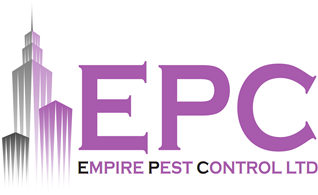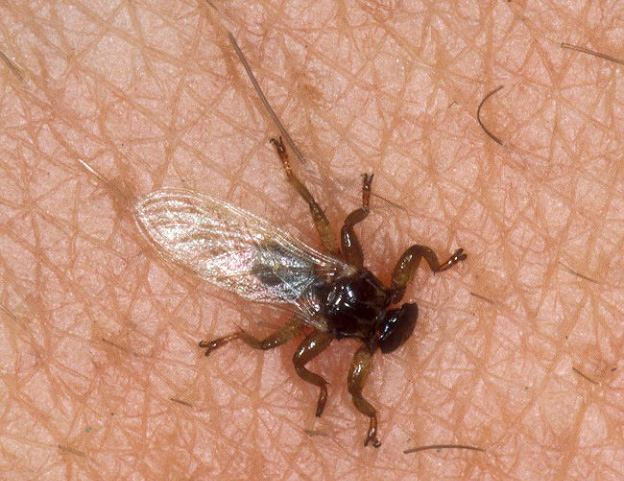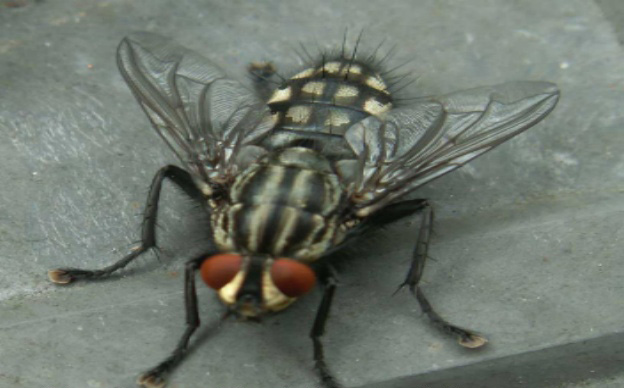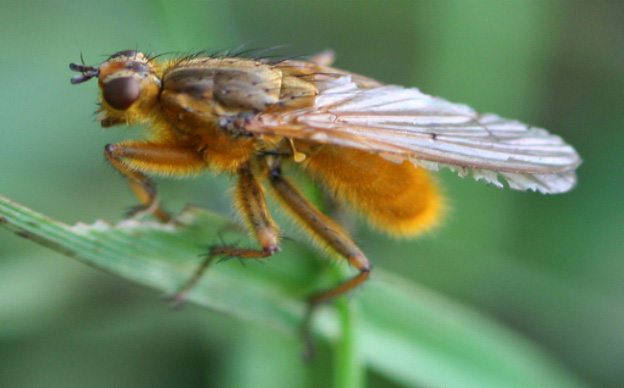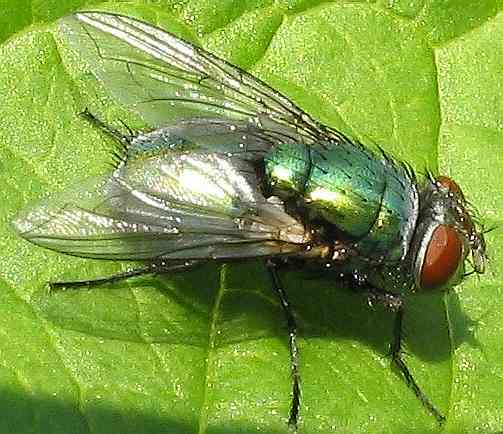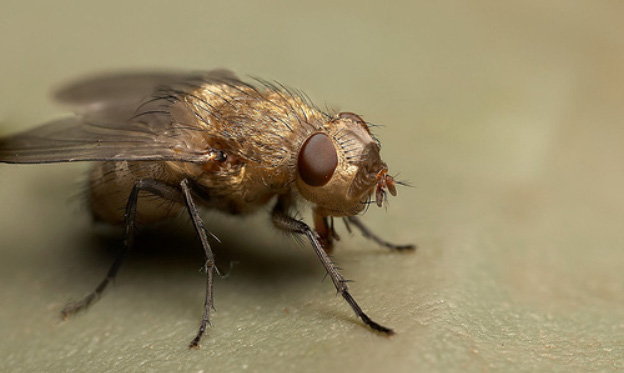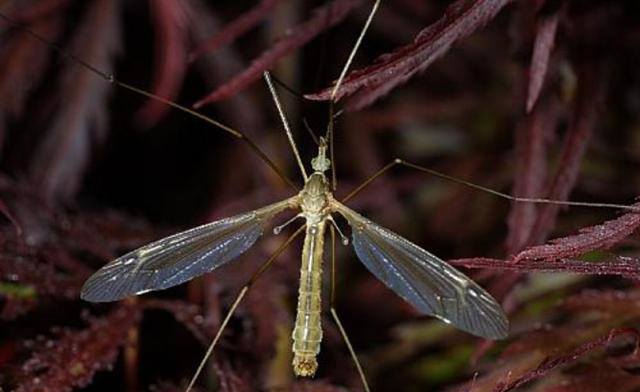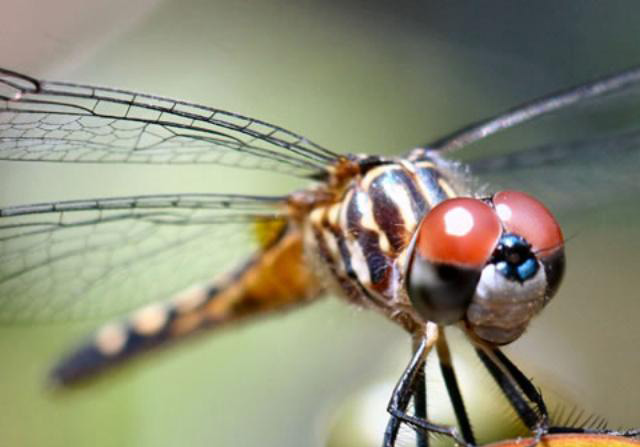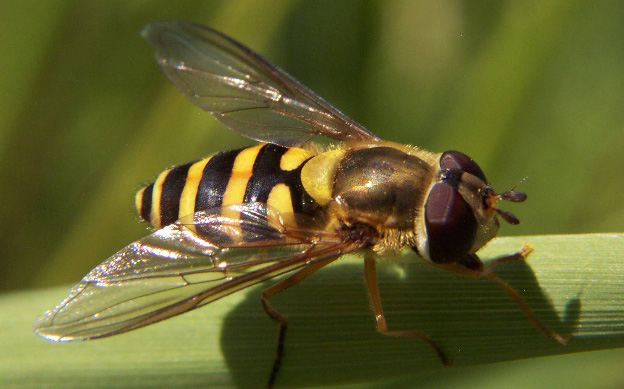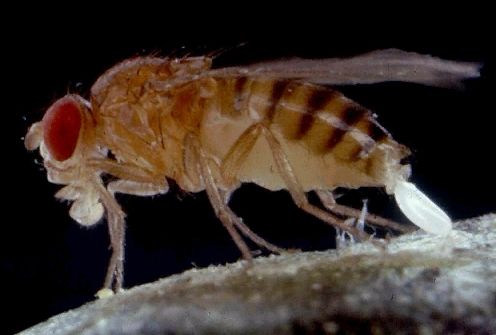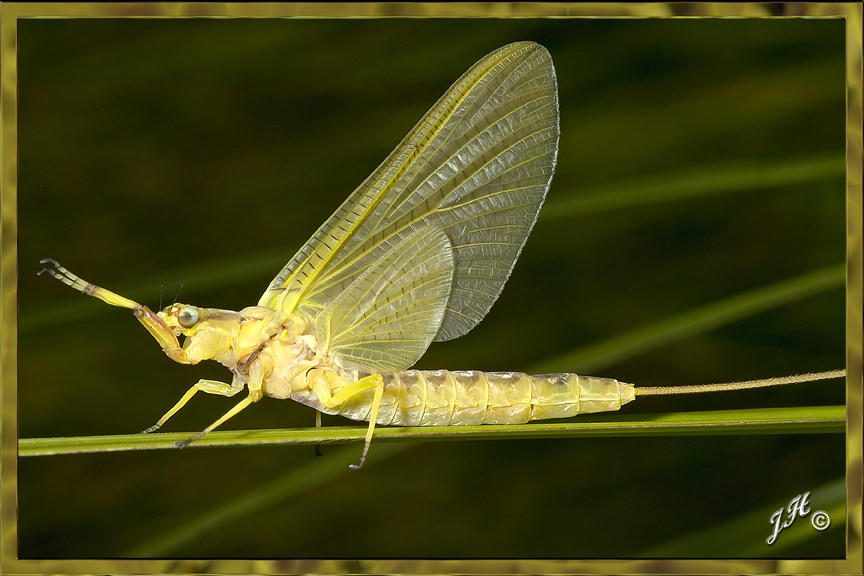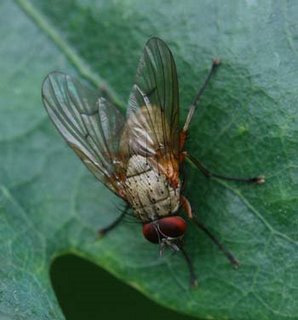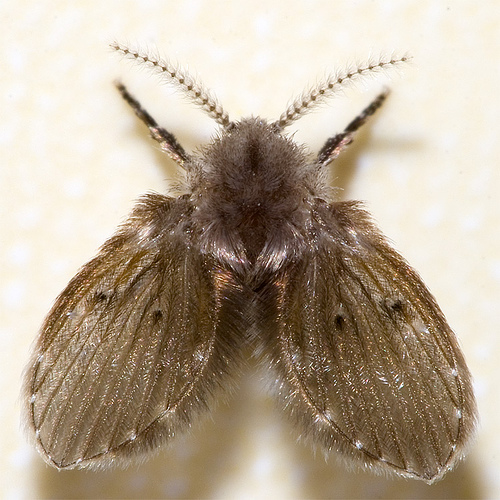The Common House Fly practicularly occurs all year round but are most abundant during the summer, with several generations. The live on both food for human consumption and rubbish. This fly is of considerable epidemiological importance due to the fact it can transmit diseases.
Size, Shape and Colour: This fly is approximately 6-9mm in length, has a grey thorax with 4 dark longitudinal stripes and a blackish brown abdomen with yellowish brown spots on the sides from the second segment onwards. The distance between the eyes are wider in the female than the male. The abdomen is slightly hairy and the larvae are white and pointed.
Biology: The eggs are laid in food stuffs and are 1mm long, often laid in batches of up to 150 at a time. There can be upto 5 batches of these laid in a lifetime and will hatch within 8-48 hours depending on the evnironment and temperature. These are just 1mm in length and have just 3 instars in larval development. The fully grown larvae measure 10-13mm, are yellowish white and glossy. They live in rubbish, manure and excrement and pupae in a tubby brown puparium. They prefer to pupate in soil and will bury themselves around 60cm. The pupae is around 5-6mm in length and in about 3-4 weeks the adult fly will hatch. The flies are generally active from April to November and will live for anything from 25-52 days.
Preferred Foods: Fermenting, moist or rotting matter are preferred, however high protein animal waste and refuse are also a suitable food source.
Habitat: Food premises are of a desired habitat. Compactors, rubbish storage areas and anywhere where bad hygiene practices can be exploited.

